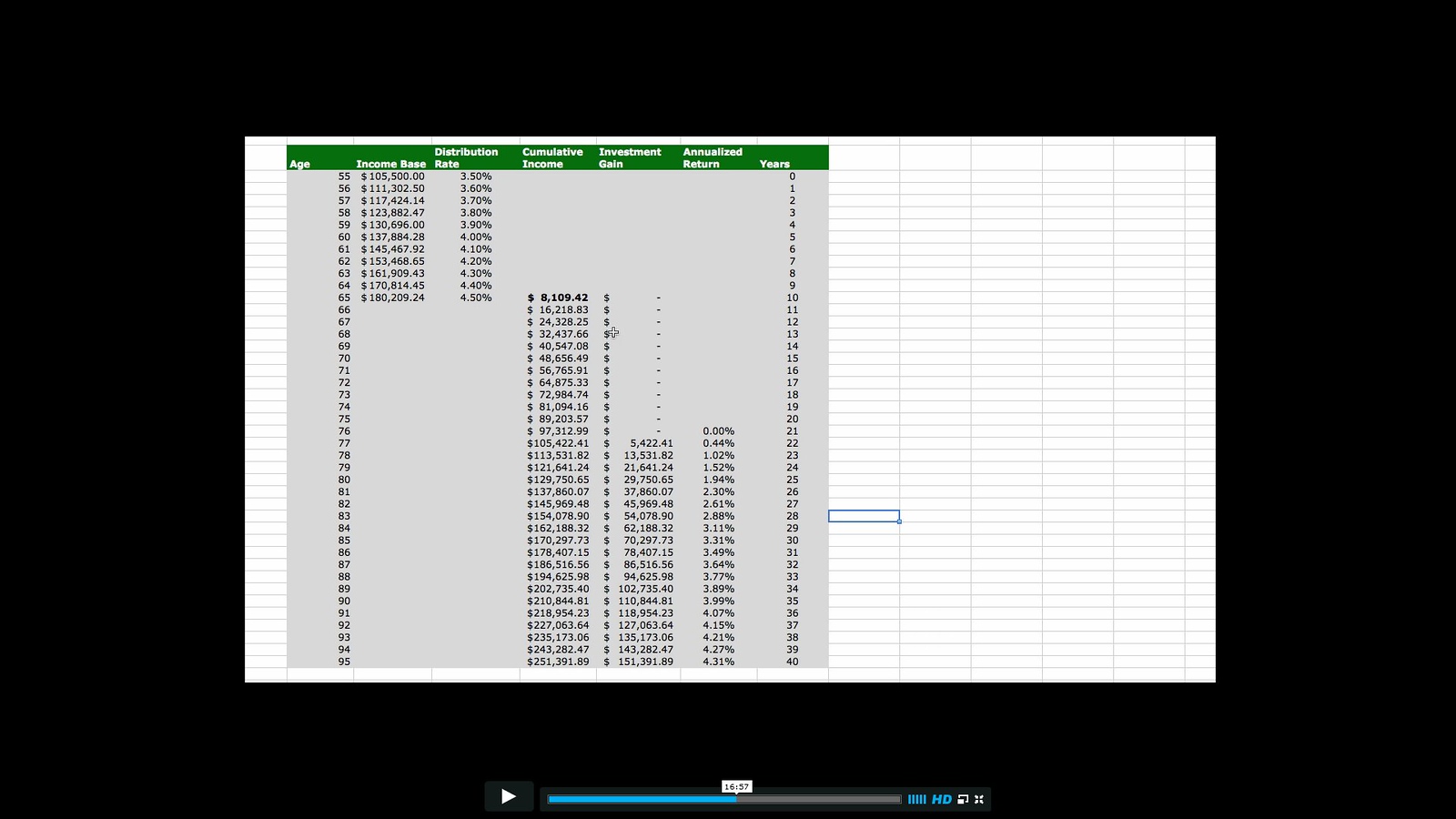That sounds like a generalization of annuities without any real information to answer my question.
Have you read Stan The Annuity Man's content?
https://www.stantheannuityman.com/fixed-indexed-annuities-explained
That sounds like a generalization of annuities without any real information to answer my question.
Does anyone have experience with Fixed Index Annuities? What are your thoughts on them?
Does anyone have experience with Fixed Index Annuities? What are your thoughts on them?
That sounds like a generalization of annuities without any real information to answer my question.

That sounds like a generalization of annuities without any real information to answer my question.
If I recall correctly, there were three big questions:
1) Do you get the dividends coming off the underlying index fund or does it go to the insurer ... dividends represent a significant portion of the total return on an index and one of the hidden gotchas is that the insurer captures that benefit rather than you.
YMMV
This is a common misconception on FIAs (because the salespeople try to make you think you are getting "market returns"), they are CD/MYGA alternatives not stock alternatives. The insurer does not invest in the index directly they hold options on the index.
So the insurance company does not get dividends as they do not hold any equities. Since the insurance company does not get dividends nor would the purchaser.
That is why these should be marketed as alternatives to CDs and MYGAs not the stock market.
They can also be used as a base contract to house a rider for guaranteed income. Some people prefer the rider over a SPIA because you do not lose access to your premium and can have more flexible payouts.
They generally will yield a little better or worse than CDs and MYGAs.
Have you read Stan The Annuity Man's content?
https://www.stantheannuityman.com/fixed-indexed-annuities-explained
My experience with them is over 20 years old from the side of the issuer and at the time they were referred to as equity indexed annuities.
The minimum guaranteed values were 90% of premium that grew at 3% annually.
The contract value was typically premium accreted for a percentage of the index (referred to as the participation rate... commonly the S&P 500 index) subject to an annual cap. The participation rate and cap rate are declared annually at the beginning of the policy year and would be based on the cost of options used by the insurer to hedge the index risk.
Pretty complicated product with lots of levers for the insurer to use to make their returns. Personally, I would avoid them.
Passing experience. I have downloaded a couple of prospectuses (prospecti ?). One from Thrivent ran to 208 pages of fine print. Right away that was a reject because of my ironclad rule to never buy anything I don’t understand. But for grins I did text searches for "fee" and similar words. Amazing! Fees to put money in. Fees to take money out. Annual fees.Does anyone have experience with Fixed Index Annuities? What are your thoughts on them?
Exactly... they were initially marketed as equity-indexed annuities and at that time there was a concern that the SEC might consider them to be securities requiring an entirely different regulatory scheme... the SEC ultimately determined that they were not securities but for clarity the insurers then started calling them fixed indexed annuities.
But not much is fixed other than the minimum guaranteed value. The participation and cap rate and other factors can be adjusted annually by the insurer based on the cost of options to cover the index feature. This along with including only the change in the index and not including dividends significantly reduce the yields.
I'm not even sure that they will keep pace with CDs or MYGAs... but in any event they are way to complicated for most people and not worthwhile.
This is why I like my immediate annuities from TIAA.
My TIAA Traditional annuity is similar to an SPIA except that TIAA makes unscheduled increases to annuitant's payouts based on reserves. We got a 5% increase for this year, the largest ever.
And TIAA's immediate variable annuities are easy to understand. No guaranteed payout amount and no cap.
I have VAs based both on the broad stock market and on commercial real estate. My monthly payouts are based on a simple formula which depends on how the underlying investment (QCSTIX or QREARX) has done over the past month or year.
Too bad other insurance companies don't offer simplicity like this...
5% increase? really, so for every $1000, $50 bucks? That's pretty good. I'm planning to get a TIAA annuity when I retire. If you don't mind me asking, at what age did you start out your annuity income. Thanks.
Trying to "avoid market downturns" is a surefire way to also not participate in market upturns which happen most of the time and compounded can allow you to significantly grow your money.
Most annuities, not all, but most are complicated insurance products masqueraded as investment products.
Avoid.
Hi there, Cyber.
I started my annuity income at age 63, when I retired, with a ten year guarantee back in 2013.
But that doesn't matter; the increases apply to everyone...
https://www.tiaa.org/public/about-tiaa/news-press/press-releases/2021/12-16
I was told by sincere people whose motives I trust that the best reason to purchase an annuity is to cover the gap between monthly income and monthly expedniture. I get it. But did anyone buy an annuity whose income coverd montly expense and they just were sick of market downturns every few years? They just wanted to take some of the risk out of their finances? In some ways an annuity is a transfer of risk. Any real world experiences you wish to share?
